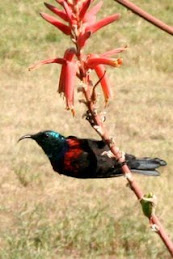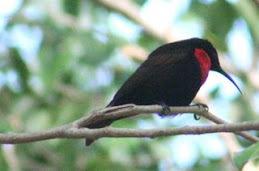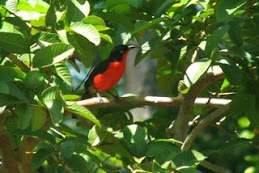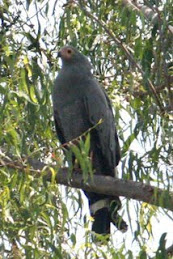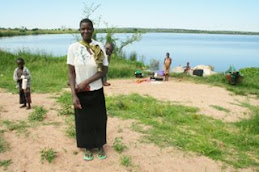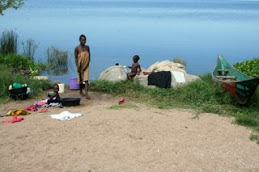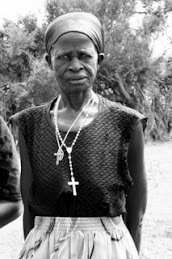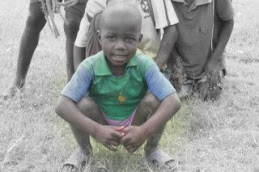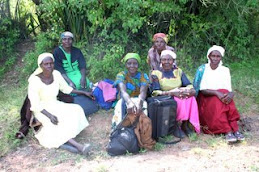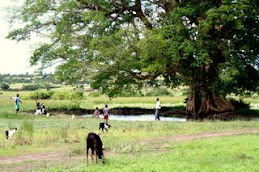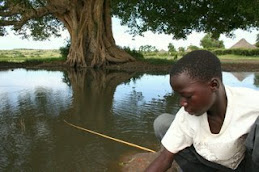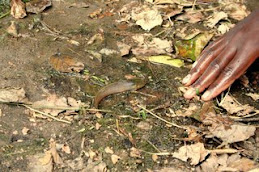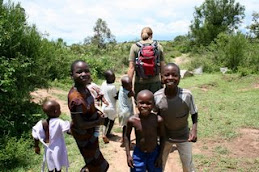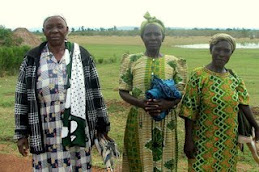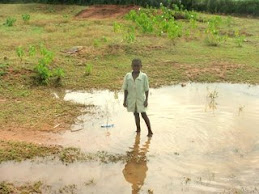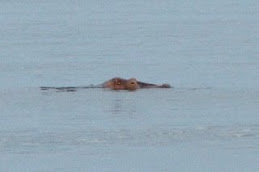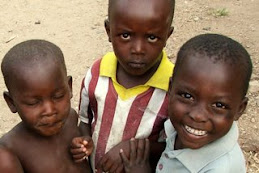By now, most of our faithful readers know that Paul and I are back in the US but to those who don't and have been worried about us, I apologize. Let me fill you all in on the interesting events of the past 2 months.
In late November, Lalmba founders Hugh and Marty and their new executive director Carrole were preparing to leave Kenya following a productive 3 week visit. They approved our proposal to add a pediatric HIV program to the PSC and we were excited to get started. But, after spending 9 months in the bush, Paul and I decided to take a short vacation and get re-energized for our final 3 months in Kenya.
Our friend Maggie
Tidwell is executive director of Bead for Life (
www.beadforlife.org), a wonderful organization that works to lift Ugandan women out of poverty. She lives in Kampala, Uganda and had given us an open invitation to visit (her amazing blog can be found at :
www.ugandandays.blogspot.com. Maggie was the founder of Colfax Community Network which provides all kinds of needed services to homeless and poor working families who live along the Colfax corridor in the Denver metro area. We had collaborated on a project to provide health care to these families by bringing the Stout Street Clinic's mobile clinic along on outreach with her team every Tuesday for 5+ years. Maggie joined
BFL in May 2008 and has already done amazing work for that
organization. We were anxious to see her and her projects and this seemed like an ideal time to visit.
On November 20th we rode along to Kisumu with the Hugh, Marty and Carrole. They were flying to Nairobi the same evening on the first leg of their journey back to the US. After running many errands, shopping at an outdoor artist market and having a goodbye lunch, we bid them farewell with plans to see them back in Denver in early March.
On Friday morning, November 21st we took a matatu to the Ugandan border. A matatu is a van with seats for about 12 but carrying 17. The trip to the border town of Busia took about 2 1/2 hours and cost 400 shillings each (about $5.30). We stood in line to get our exit visa from Kenya and entry visa for Uganda. I handed the cards and passports to the immigration agent who inspected them and then waved us out of the line. We were taken into an office and accused being in Kenya illegally. We were told that the one year visa which we applied and paid for in February 2008 needed to be renewed after 6 months. Since we'd been in the bush we hadn't had a need to use our passports until that day. We never looked at the expiration date.
A very angry and aggressive immigration agent questioned what we had been doing in Kenya for 9 months. I answered honestly about our volunteer work for Lalmba and he said "if you say that to me again I'll have to arrest you for working without a work visa". We stressed the volunteer nature of our work which he said didn't matter. It was still work and we should know their laws if we were going to be in their country. He then confiscated our passports and told us we were being taken into custody, transported back to Kisumu to meet with Immigration.
In Kisumu we had charges brought against us for being in the country illegally and for working without a work visa. We went before a magistrate, found guilty of the first charge, fined 20,000 shillings each and ordered deported. Nothing we said made a difference. We were given the choice of paying the 40,000 sh immediately or being jailed for 30 days. We only had enough money on us to pay one fine but luckily the Lalmba Project Director, Marico, arrived in time to pay the second fine. The police threatened to jail us until we could be deported but Marico was able to get us released on a personal 400,000 sh bond with a bribe of 3000 sh. What a long, crazy and at times frightening day.
We drove back to Matoso the following day, arriving in the late afternoon. We had one evening to pack, tie up some loose ends, write notes to various staff regarding projects and try to say goodbye to as many people as possible. As staff learned of our situation they began to come by to see us. They were all saddened by the way we had been treated and by our impending departure. At that point Paul and I still hoped to be able to delay our deportation for 3 months or to get help from the US embassy that might reverse our situation. The worse case scenario we thought was to have to fly to the US, get another visa and then turn around and fly back. We never really thought we wouldn't be back.
We packed our most important belongings but left a lot behind including clothes, personal supplies, and Paul's Ovation guitar. Our departure from the compound was a very sad one. We didn't know what the coming days would hold or how soon we could return. We were disappointed to have missed the opportunity to visit Maggie and to get started on the pediatric HIV program. As it turned out, it would be our last look at Matoso for a very long time.
On Sunday we drove back to Kisumu with Marico (a 5 hour drive over rutted, bumpy roads) and were turned over to Immigration at 8 AM Monday morning. We were driven to Nairobi in a government vehicle, accompanied by a guard and 3 other immigration officials (or ride-alongs... we were never really sure). We asked where we would stay in Nairobi and were assured that there was a place for us to stay while they made our travel arrangements. Arriving at 9 PM, after business offices were closed we were turned over to the Immigration office at the airport.
We were questioned about our travel arrangements and when we said we had been told they were making arrangements, they became angry and threatened to throw us in jail for 2 or more weeks until their government got around to it. In fact, they said, we were going to jail anyway, and it was up to us how long we stayed there.
Paul was taken to the men's cell where 9 African men were already being held. I was put in the adjacent women's cell. Paul was on the phone trying to make flights plans with Carrole but as soon as they got us onto a morning flight to Cairo, the immigration officers told us we weren't authorized to leave yet. This was a pattern throughout our interaction with Kenyan immigration. We were given erroneous information and kept in the dark for much of the time.
The concrete cells had metal doors with small peep holes in them. No sleep, no food, just bright lights and lots of noise. In the middle of the night 15 men from Ethiopia were added to Paul's cell. There were 6 men on one bunk, sleeping like spoons and rotating in tandem. Paul found that if he crawled onto the upper bunk he could look into my cell and give me updates on how many men were in his cell, where they were from and how long they were there. One man had been in their custody for 2 months. If we had waited for them to make arrangements we would most likely still be there.
The following day we finally got approval to book our flights. Paul got us on a midnight flight to London and after a 7 hour layover we got onto a direct flight to Denver. Due to the 10 hour time difference, we arrived there on Wednesday, the night before Thanksgiving.
We had been in contact with my sister Francesca who notified our families. As we made our way through customs we were welcomed home by Francesca, Ed and daughter Katie, Karen and Todd, and the entire Roseto family- Jim, Julie and their 4 kids Sophie, Chloe, Isabelle and Phil. It was an emotional welcome for us and just what our hearts and souls needed the most. It was the night before Thanksgiving and we were home with our family again. What an unexpected gift and blessing it was.
After a hot shower, a slice of pizza, and a good night's sleep we were almost feeling normal again. After the holiday Carrole at Lalmba worked with someone in Washington DC to hand deliver our request for a new visa. In the end, we weren't able to get another visa in time to return. We wish more than anything we had been able to finish our year there so we could help the Kenyans initiate the Peds HIV program, complete some of our other projects and say a proper goodbye to our friends and colleagues.
It's January28, 2009 and we've been back now for 8+ weeks. We're slowly moving back into our "normal" lives while trying to hang onto the wonderful lessons of Africa. People have asked us if we'd ever go back and my answer is an unqualified yes. (the first time I said we would, Paul looked at me and asked jokingly "who's this we you're talking about?)
The 9 months we spent in Africa were some of the best times of our lives. We worked as a cohesive team, accomplishing a lot and keeping each other good company. We learned so much about tropical diseases, the Luo culture, local customs and foods, living in the bush, being an ex-pat in Africa and so much more. When I look back at our photos I feel nostalgic for those beautiful people and their land and hopeful that we'll meet again.
I'll continue the blog for a while longer to upload many more photos now that we had a high speed internet connection again. I will also update the news about the library project in the next few days. To all of our faithful readers, erakomona and asanti sana- thank you for sharing this journey with us.


















































































